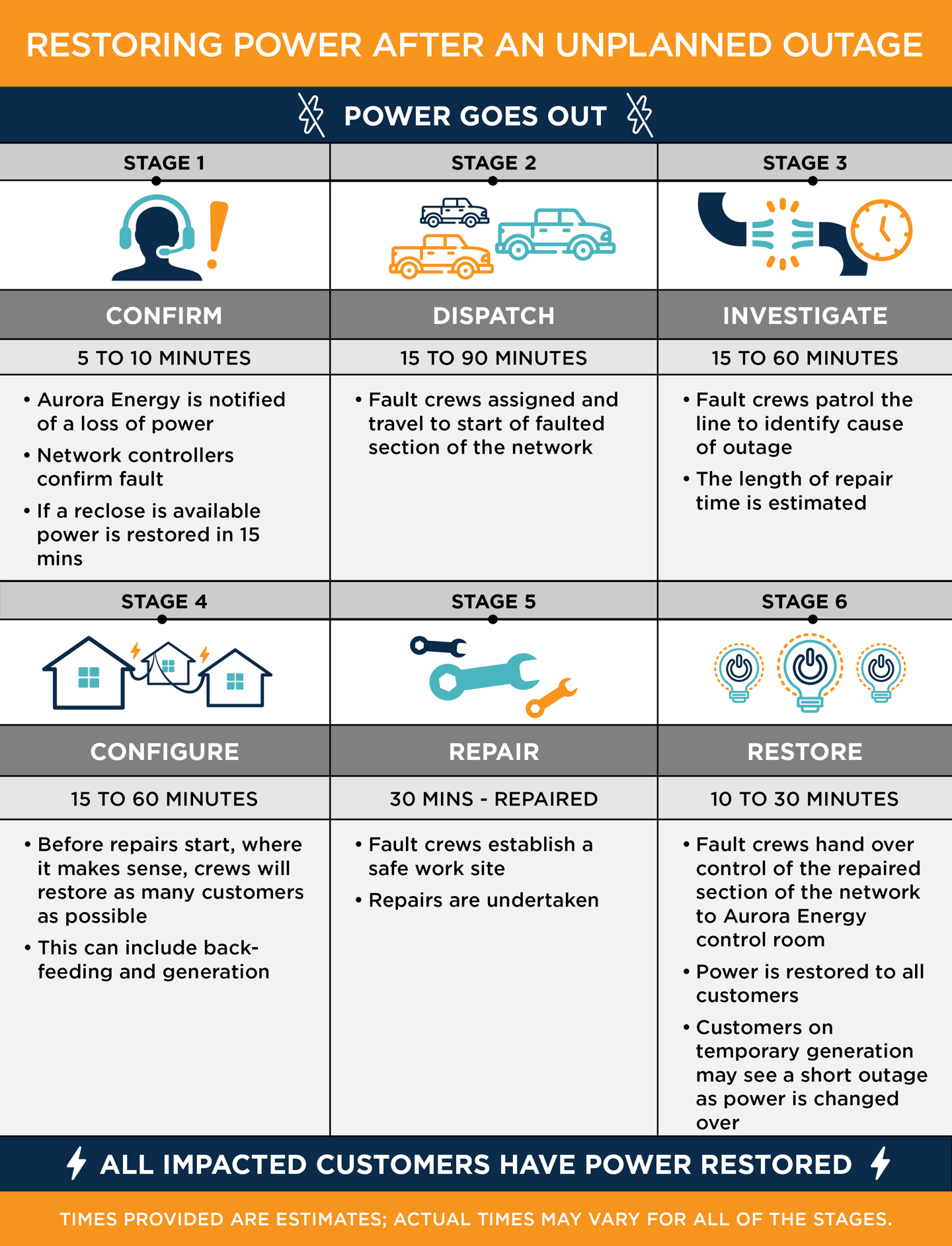Unplanned power outages can be caused by many things. Our lines and poles can be damaged by trees/branches, lightning, extreme weather, animals/birds or vehicles.
Underground cables can also be affected by things like cable strikes, flooding, and earthquakes. Plus, even with regular inspections and maintenance, some electrical equipment can stop working due to general wear and tear.
Restoring your power supply
First, we are notified of an outage. Either our monitoring system alerts us to any faults on our main power supply circuits or customers call to tell us about more localised faults.
Once we know about an outage, our control room will work with our 24/7 fault crews to restore power.
Usually, if there is a momentary outage, for example if a tree branch falls on a line for a couple of seconds then falls to the ground, equipment called a recloser automatically lets power flow through the lines again.
If that’s not the case, sometimes we can temporarily restore power to customers by back-feeding electricity from elsewhere while the repairs are made.
Some of our rural customers are at the end of the local network, which means there are no alternative options to back-feed electricity. This means the power might be out for longer in a rural area than an urban area, where there are more options to back-feed.
Sometimes we can use generators to provide a temporary power supply but unfortunately they can’t be used for every unplanned outage.
Not only is a delicate balance required to manage load fluctuations in real time, but mobile generators can only be connected at certain points on the network and, in some cases, using a generator can introduce additional hazards for the repair crews. If this is a possibility, we will not use them - safety always comes first.
There are also times when it is faster to restore power than get a generator set up, especially if we need to get a generator transported to the area where the fault is.
We’ll fix any faults on our main supply circuits first, followed by those affecting smaller areas. This allows us to get the power back on as quickly as possible to as many customers as possible.
Before power can be restored, fault crews often need to travel to the site and patrol the line to identify the cause of the outage. Some faults can be hard to find and even harder to fix, especially on stormy nights, in rural areas, and where our network is underground. In some cases, we may not be able to determine the cause of a fault, for example power outages caused by interference from birds and other animals, where any evidence of this has disappeared.
Before starting repairs, fault crews must establish a safe work site. We will always put the safety of the public, our customers, staff and contractors first.
In dry conditions it’s important we all do our bit to help reduce fire risk.
When Fire and Emergency New Zealand (FENZ) declare a prohibited fire season, we disable the automatic reclosers* that help get the power back on quickly after a short outage. We take these steps to prevent any unintentional fire risks from damaged equipment. As a result, our fault crews need to manually check the lines to make sure everything is safe before we can turn the power back on. This added safety measure means our restoration times can be longer than would normally be the case.
*Reclosers are circuit breakers that can automatically trip if a fault has been detected and are helpful for momentary faults such as a tree branch brushing a power line. They can also limit the number of customers that might be impacted by a power outage by reducing the outage area, depending on where the recloser is in relation to the fault. The recloser can be remotely controlled from our control room.
Please see below an outline of the different stages and approximate times for restoring power after an unplanned power outage. Bear in mind this is indicative only, as each situation is unique. The times will be longer for more complex repairs and for those in more remote areas of the network, where we need to allow for travel time.
Just know that we’ll always do our best to restore power for you as quickly and safely as possible.

Find out how you can prepare for outages here.
